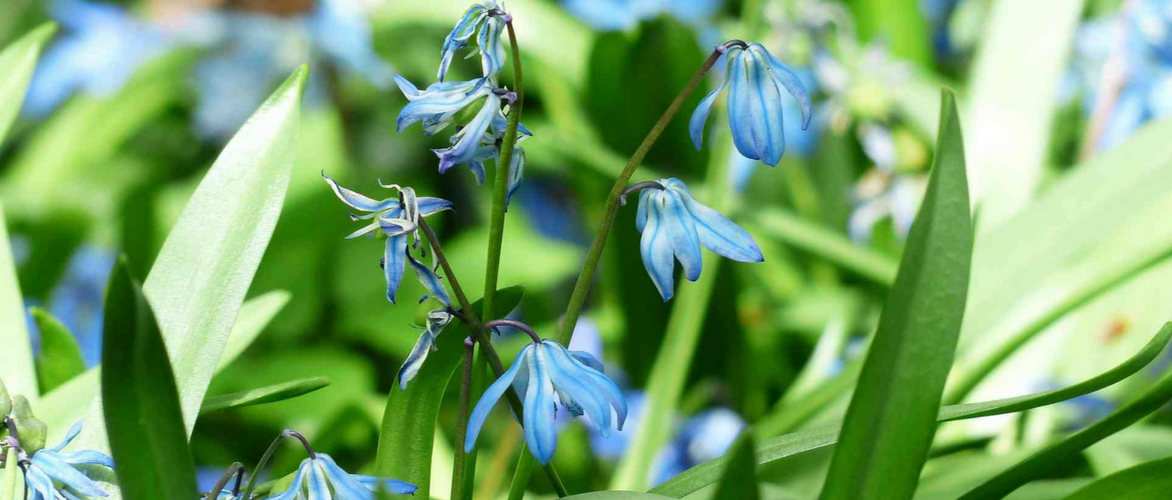
Scilla: planting and care
In flowering tapetum or in pot
Contents
Spring Scillas are among the easiest small bulbs to grow. With their early flowering, Scilla are among the first flowers of spring, creating waves of sky blue, pink, or white for two to three weeks, supported by tufts of fresh green grass.
For successful planting, place them in well-drained, cool, humus-bearing soil. All species of Scilla are very accommodating regarding exposure and thrive in non-burning sun or partial shade; they can even tolerate complete shade. They require no special care, and their maintenance is simple.
When planted under good conditions, these lovely spring-flowering bulb plants thrive and naturalise easily in all gardens, in light woodland, at the foot of deciduous trees and bushes, along pathways, in rockeries, or scattered across a short grass meadow.
How to achieve a lovely flowering carpet, a natural planting, or a spring pot? Follow all the maintenance, cultivation tips, and best practices from our experts to properly plant your Siberian Scilla bulbs, Wood Hyacinth (S. nutans), Two-leaf Scilla, or Campanulate Scilla (or Spanish), in blue, pink, or white hues.
Where to plant Scilla?
If Scillas prefer to bloom well in non-burning sunny exposures, they also appreciate partial shade, and can tolerate total shade.
Perfectly hardy, they are not afraid of the cold and can withstand temperatures down to -15°C, with some, like Siberian Scillas, enduring even lower temperatures. They grow everywhere, in all regions, even at altitude.
Scilla bulbs are planted in ordinary, fairly fertile, cool but especially well-drained soil. Scillas are sensitive to excess water, which can cause the bulbs to rot.
After flowering, the foliage of Scillas wilts and yellows, giving the beds a somewhat unsightly appearance: hide this neglected look by planting them among later-flowering perennials such as bugle, pulmonaria, Corydalis, or euphorbias.
Scilla bulbs can be tucked in anywhere and blend into all settings, with a preference for naturalistic gardens and weekend gardens that require little maintenance. They will naturalise in light woodland, at the foot of deciduous trees and bushes, along pathways, in rockeries, or scattered in the short grass meadow.
Surrounded by crocuses or muscaris, they also make beautiful spring planters.
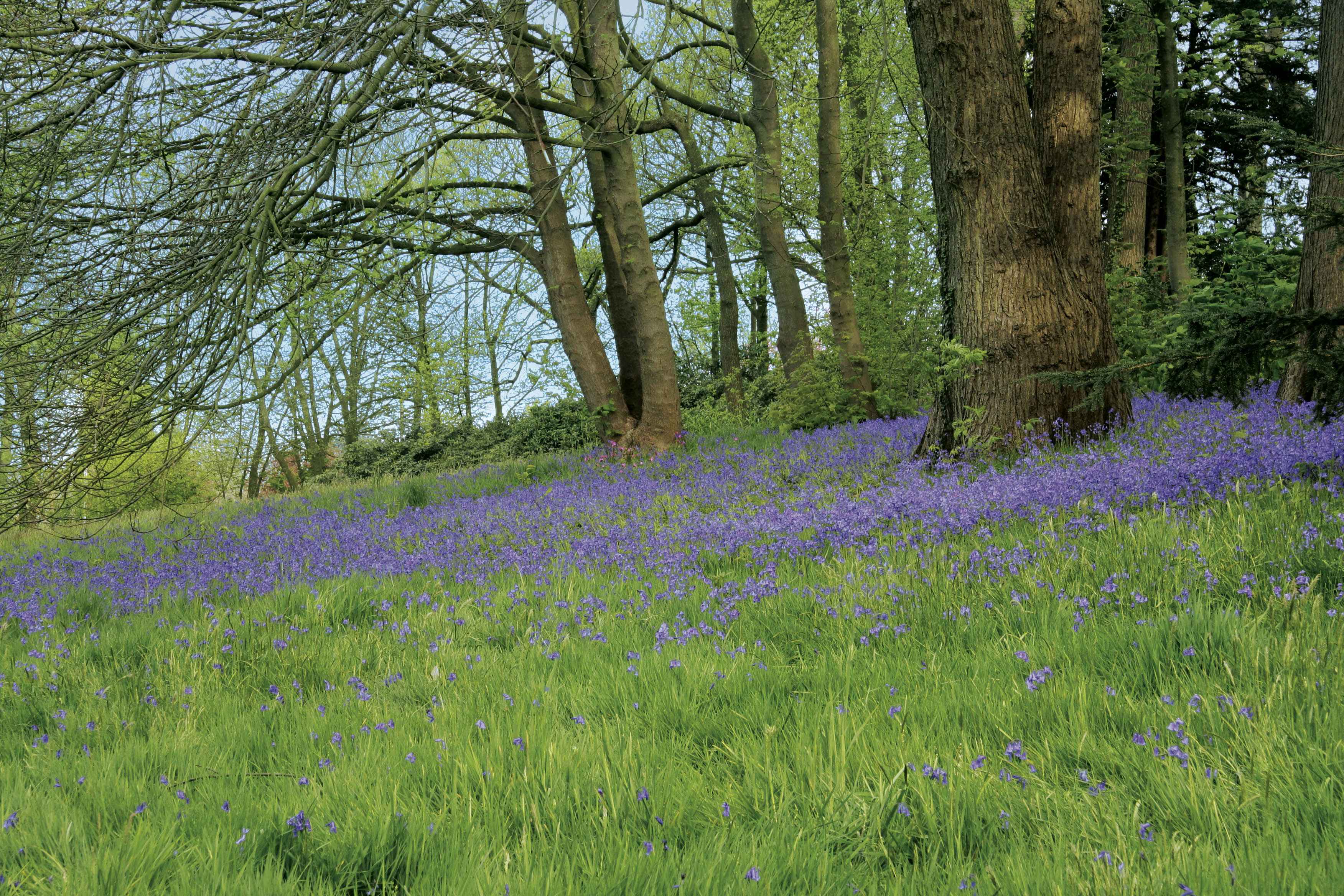
Scilla bulbs are easy to naturalise
When to plant?
Scilla bulbs are planted in autumn, ideally from September to October, to see them flower by the end of winter.
Later planting up until mid-winter is possible, but flowering will be delayed and less beautiful.
Discover other Scilla
View all →Available in 1 sizes
Available in 1 sizes
Available in 1 sizes
Available in 0 sizes
Available in 1 sizes
Available in 1 sizes
Available in 1 sizes
Available in 1 sizes
Available in 1 sizes
Available in 1 sizes
How to plant these spring bulbs?
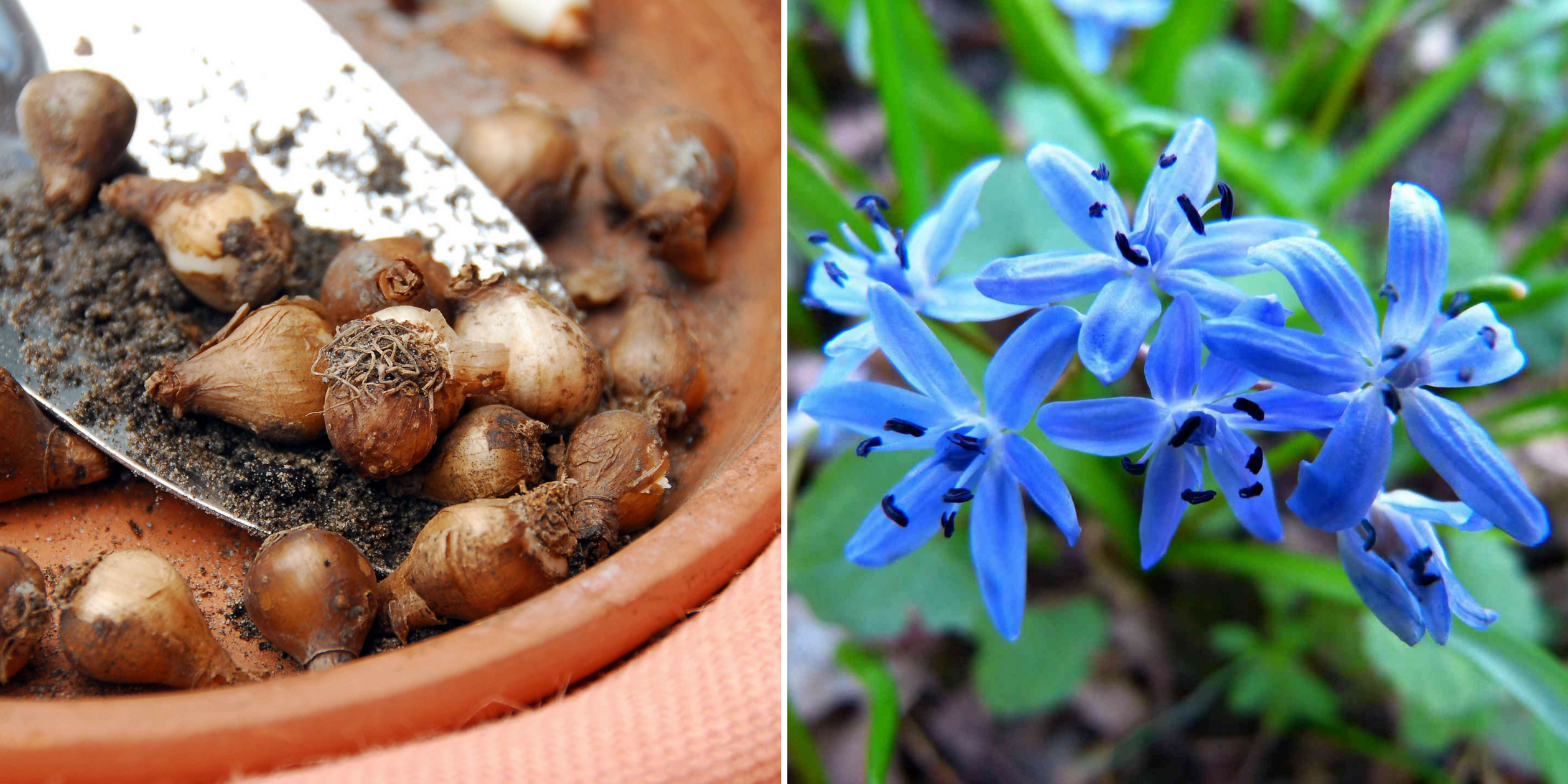
Scillas can also be grown in small groups or scattered in a short grass meadow
These small bulbs that flower early in the season, starting in January for some Scillas, deserve to be planted in numbers (about 100 per m², up to 200 per m² in dense planting), creating a floral carpet for a remarkable decorative effect. The only imperative for their good health is that they require well-drained and well-amended soil.
Natural Planting
Scilla bulbs can be tucked in anywhere without disturbing the plants already in place. To create a naturalistic bed, integrate them into an already planted area or at the base of deciduous trees, placing white, blue, or pink Scilla bulbs in clusters between the established plant clumps.
Using a bulb planter, plant to a maximum depth of 8 cm, spacing the bulbs 5 to 10 cm apart or planting in groups of 10 to 15. Opt for an irregular planting for a natural decorative effect.
Dispersed Effect in a Short Grass Meadow
Cut out patches of turf, then using a bulb planter, plant to a maximum depth of 8 cm. Reposition the turf pieces after planting the bulbs.
In a Monochrome Floral Carpet
Create a sea of blue bells with Scilla nutans, blue campanulate Scilla, or the splendid cultivar of Siberian Scilla ‘Spring Beauty’! Over the years, Scillas naturalise very easily and will reliably return year after year, flowering with their colourful patches in the wilder corners of the garden or at the edge of a woodland.
Vary the varieties to extend the flowering period; the Meadow Scilla, which flowers later, will bloom in May, while the others will flower in March-April.
For a successful mass planting, count on about 100 to 200 bulbs per m². Start by stripping the soil. Dig out a portion of the chosen area to a depth of 10 cm, then place the bulbs, spacing them about 5 cm apart. Backfill with the soil removed.
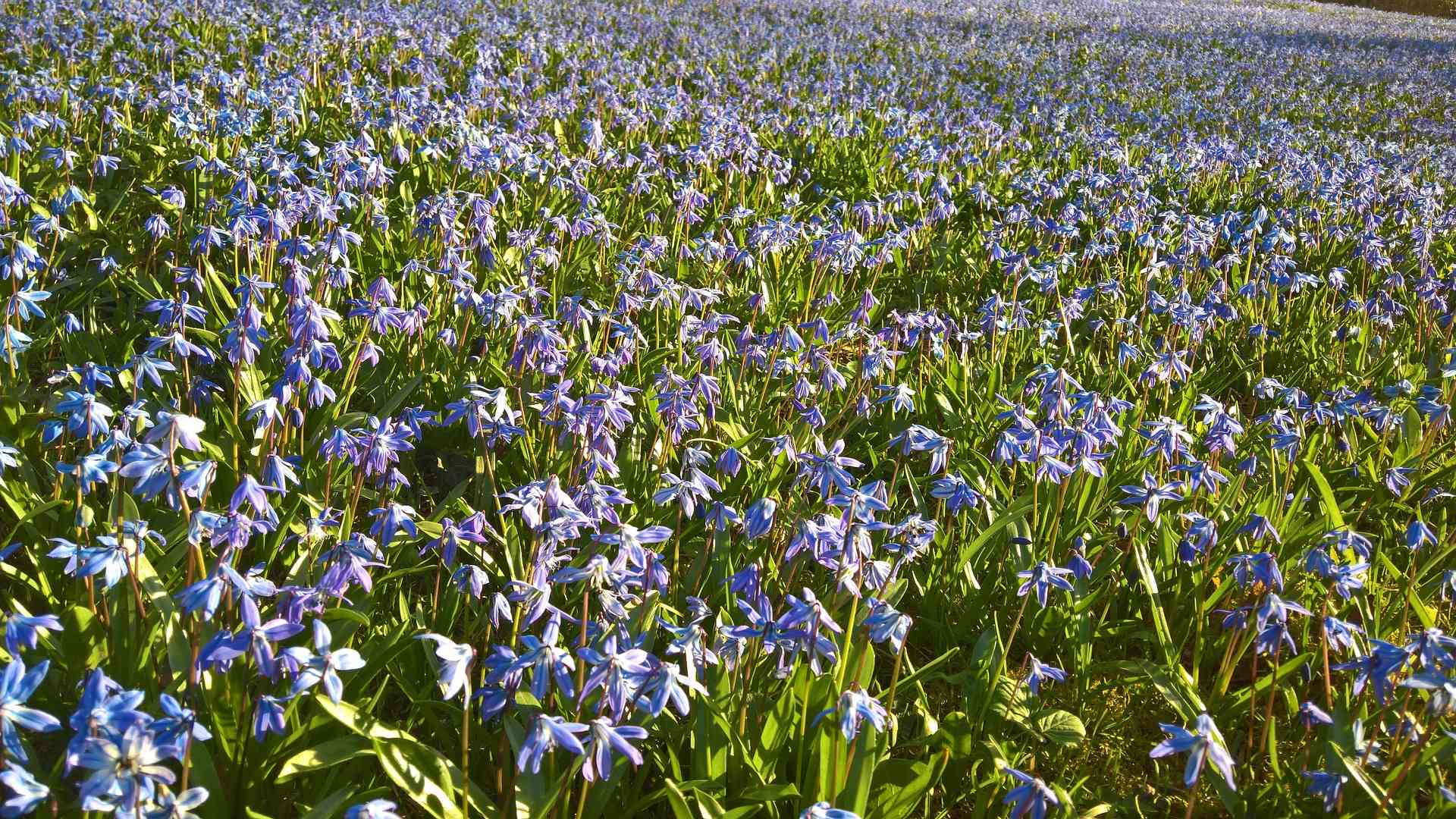
Avoid overly regular patterns: for a beautiful harmonious effect, we recommend creating an oval shape with rounded edges
Read also
Planting spring bulbs lateActions to follow
Scilla bulbs should be planted closely in well-drained soil.
- Remove weeds and stones
- Loosen the soil deeply with the addition of organic matter
- Improve drainage if necessary with gravel mixed into the soil or laid as a bed under the bulbs
- Plant at a depth of 8-10 cm with the tip of the bulb facing upwards
- Space the bulbs 5 to 10 cm apart or plant in groups of 10 or 15, ensuring the bulbs do not touch
- Cover the bulbs with twice the height of soil
- Water twice a week during the growing season if the ground is dry
- Keep dry in summer
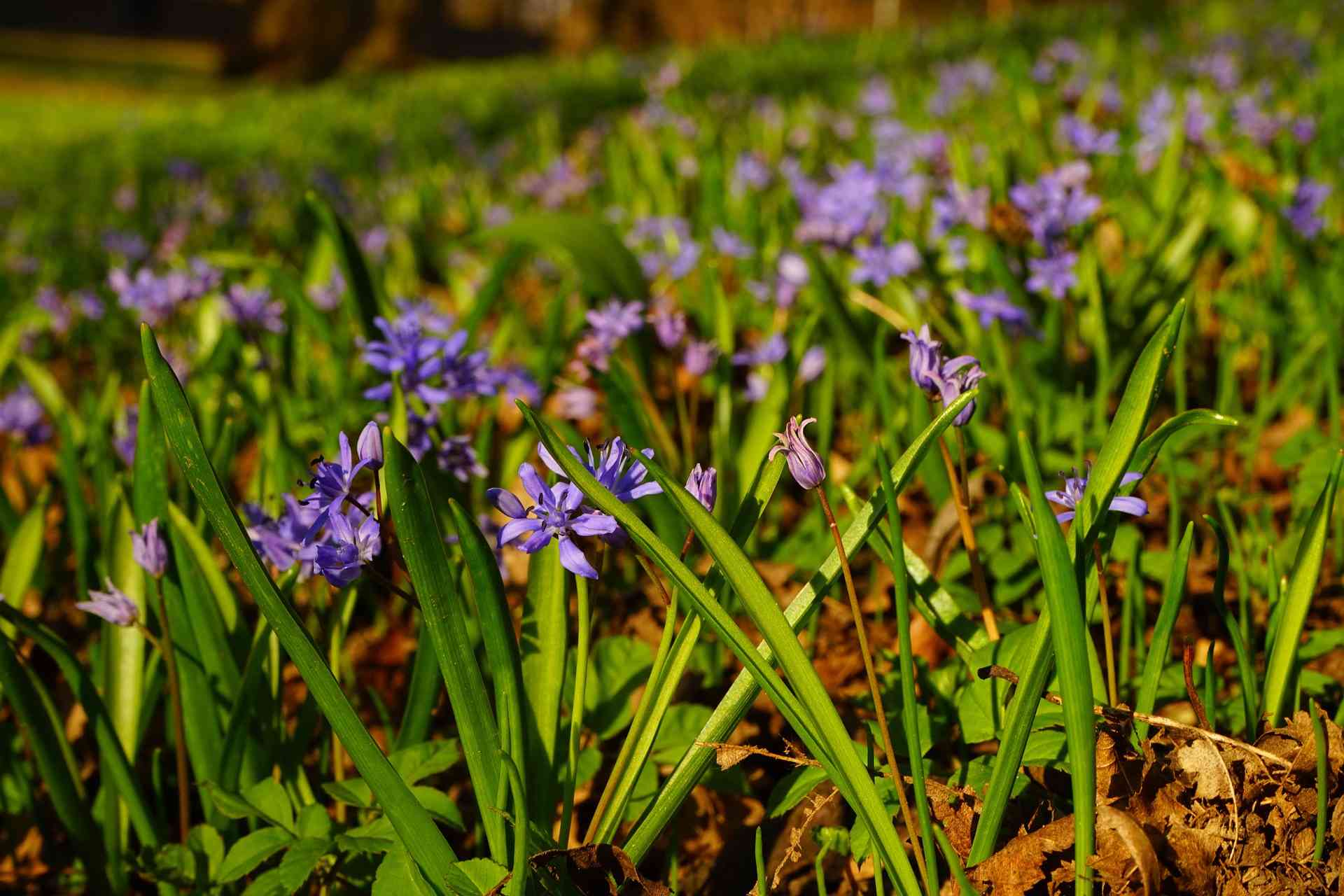
Leave the Scilla bulbs in place; they will form colonies over time
In a lasagne style pot
Scilla bulbs are perfectly suited for pot cultivation, allowing you to enjoy their flowering on the terrace or balcony. Opt for lasagne or nival zone planting: a technique as fun as it is rewarding that involves planting bulbs in successive layers, like a lasagne dish. Vary the heights by mixing with Scilla and a dozen other spring bulbs. The Scilla will bloom first, as they will be planted in the top layer.

A great tip for enjoying continuous flowering from January to May
Proceed from September to December and ensure you have a pot tall enough to create 2 to 4 layers.
A step-by-step planting guide
Step 1:
- Spread a layer of clay balls at the bottom of the perforated pot (preferably in soil) for perfect drainage
- Fill with a mixture composed of half garden soil, a quarter potting soil, and a quarter gravel or pumice
Step 2:
- At the bottom, in lower layers 3 and 4, tightly place tulips, hyacinths, and daffodils that will take over the flowering
- Cover each layer with one to two times the height of soil
Step 3:
- In upper layers 1 and 2, place early bulbs of Scilla, snowdrops, muscari, crocuses, botanical tulips, or miniature cyclamen
- Cover with soil
Step 4:
- Water regularly during the growing season, abundantly in winter and autumn, then stop watering in summer during the resting period when the foliage begins to yellow
- If your soil is poor, apply special bulb fertiliser during and especially just after flowering
Maintenance and care
Scillas are easy-care plants that require no special attention.
No pruning is necessary. However, to limit self-seeding, you can cut the flower stems after flowering. Do not mow or cut the foliage until it has yellowed, allowing the bulb time to replenish its reserves.
Every 4 years at most, divide the bulbs. Do this just after flowering; this operation will help to extend the flowering area and maintain vigorous and floriferous plants.
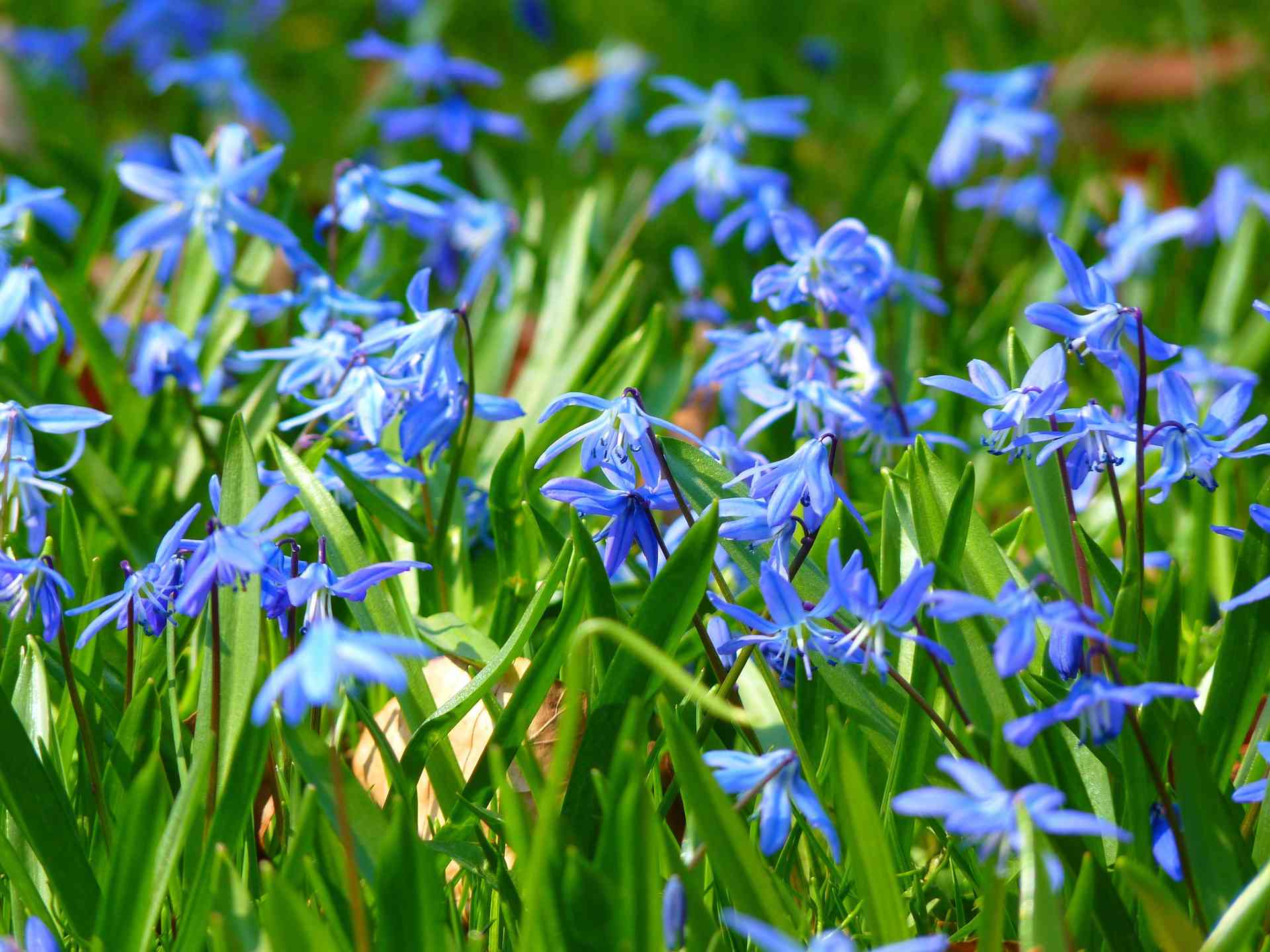 Scillas grow on their own, fading away in winter to return each spring, increasingly vigorous
Scillas grow on their own, fading away in winter to return each spring, increasingly vigorous
- Subscribe!
- Contents






























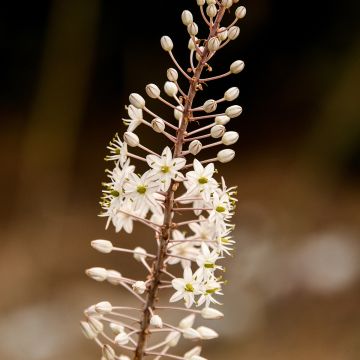
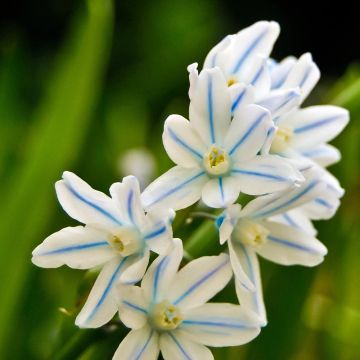
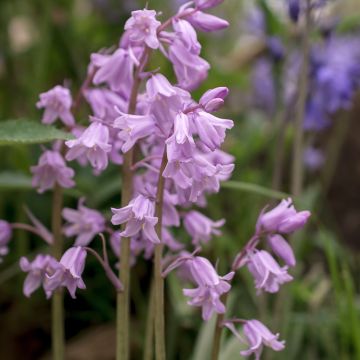

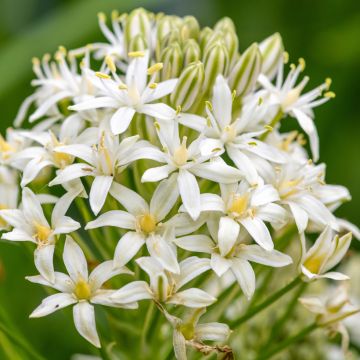
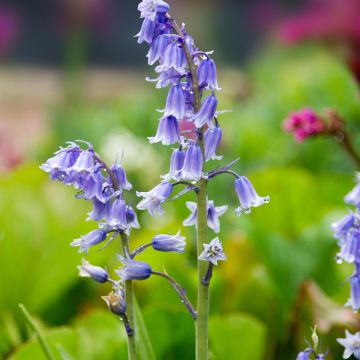
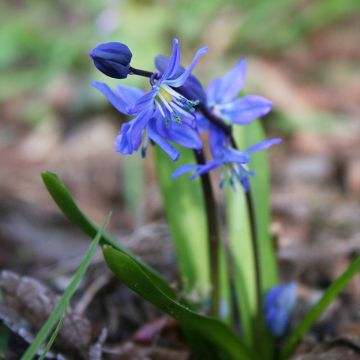

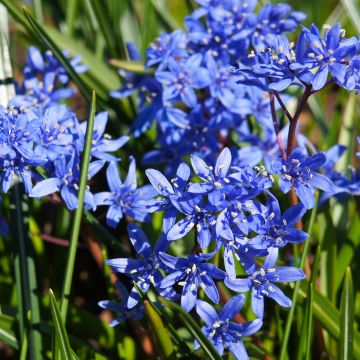
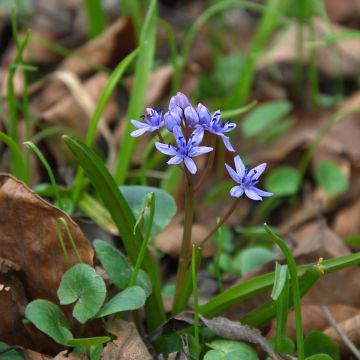
Comments